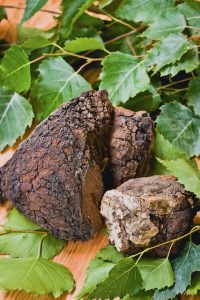Top 5 Tonic Herbs for Adrenal Fatigue
 After my date with auto-immunity I wound up pretty depleted. I began working on, and continue to work on, my adrenal health. I think this will always be the case as I am very type-A and am used to using up all of my energy.
After my date with auto-immunity I wound up pretty depleted. I began working on, and continue to work on, my adrenal health. I think this will always be the case as I am very type-A and am used to using up all of my energy.
I have fallen in love with sea vegetables and tonic herbs and I don’t regret my journey for one minute especially when the information I have gathered can help someone else.
I notice I’m not the only depleted one. Is it seasonal? A little. Is it our go-go-go lifestyle? Yes. Our belief systems? The causes of stress are many and ultimately we pay the price with flatlined adrenals that are propped up by stimulants and cortisol. I’ve made a list of my top five functional foods (for today, LOL) that help to support and balance stressed adrenals.
Each of these herbs can benefit a long-term stress situation involving inflammation and a compromised or dysregulated immune system. Does this sound familiar? Join me in learning more about these top five adrenal tonic herbs.
Eleuthero
Also known as Siberian Ginseng (but not allowed to be called that any more) Eleuthero has many helpful properties during times of stress. It has been used in traditional Chinese Medicine since 190 AD or earlier. It is high in Eleutherocides which are immunostimulants so can be good for stimulating the immune system. It can stimulate energy and increase endurance. Eleuthero has been taken to help speed healing of inflammation or injury. I like the taste of Eleuthero and often use it in elixirs, usually in the form of a tincture.
Cordyceps
When I first found out about cordyceps I didn’t want to take it because it is typically a fungus that cannabalizes a caterpillar and is then harvested. I have since learned that my favourite suppliers do not use the wild harvested cordyceps because it is just not sustainable and is too expensive for their clients so they use cultivated cordyceps that is not grown on insects. Phew! I love cordyceps because not only is it good for increasing energy and levelling blood sugar it is also a great immune stimulant which is beneficial for lung health. It has been shown to benefit healing even from lung cancer. I like it because it can help me to feel energetic but also increase my stamina over time rather than crashing out. Cordyceps tastes quite good and is in the flavour family of carob for me. It has a richness without a bitterness which I find easy to incorporate into recipes so really enjoy its versatility.

Reishi
Another great herb for the immune system Reishi is actually a fungus that grows on a variety of trees and will even grow in sawdust or straw. Reishi is one of the amazing functional foods I plan to plant in my forest garden…. Reishi is great for modulating the adrenal gland but is also helpful for the thyroid due to its Ganoderma and its high selenium content. It is an immune system stimulant and has been studied extensively as a cancer treatment. It can be beneficial for the liver and can reduce fatty deposits. Reishi can also help to regulate blood sugar. I have found that a good quantity of reishi taken in the evening over a short number of days can help to reboot sleep cycles and stop insomnia in its tracks. Reishi has been used for lowering blood pressure and cholesterol levels and benefiting the heart. Some say that reishi can make you feel loved. I believe it to have a very loving energy and find it really nourishing.
Chaga
Chaga is another fungus found on birch trees. It is a parasitic fungus  that grows on a live tree. It looks a little ugly but tastes quite good. Chaga has anti-viral and anti-bacterial properties, is an immunostimulant and an adaptogen for the adrenal glands. Like reishi it is high in selenium. Chaga has anti-inflammatory properties on top of all of the other benefits. It is one of the highest sources of anti-oxidants that I know of and has good levels of B 1, 2 and 3. It makes a great tea or ice cream and can be mixed well with other flavours without adding bitterness. Even kids seem to like Chaga.
that grows on a live tree. It looks a little ugly but tastes quite good. Chaga has anti-viral and anti-bacterial properties, is an immunostimulant and an adaptogen for the adrenal glands. Like reishi it is high in selenium. Chaga has anti-inflammatory properties on top of all of the other benefits. It is one of the highest sources of anti-oxidants that I know of and has good levels of B 1, 2 and 3. It makes a great tea or ice cream and can be mixed well with other flavours without adding bitterness. Even kids seem to like Chaga.
Devil’s Club
Devil’s Club is so close to my heart that I almost didn’t want to write about it here. Before I was introduced to this herb I really disliked it because it seemed to be everywhere and always at the bottom of a hill I was falling down or the only thing to grab onto beside a rushing river. It seemed I was forever battling Devil’s Club… until I started looking for it.
I met a woman who grew up harvesting her own Devil’s Club for anti-inflammatory salves and she taught me how to talk to the plant and harvest the roots. Devil’s Club is a powerful adaptogen, great for the adrenals that can give the user a feeling of strength and resilience. It has great anti-inflammatory and blood sugar regulating properties. Specifically the ROOT of Devil’s Club can be used for adrenal fatigue. The berries are poisonous.
Devil’s Club propagates itself very slowly and it takes plants several years to grow to the point where their roots would be harvested or they could be reproduced. The seeds take two whole years to germinate. Wild harvesting of Devil’s Club and destruction of their native forest habitat is becoming a bigger problem and the future of this plant is uncertain. I would hate to see it gone after being used responsibly by First Nations people for thousands of years. I am still learning about responsible wild crafting and am going to attempt to plant more Devil’s Club than I harvest in the hopes of keeping this plant thriving in the forests here.
Devil’s club is a sacred plant so be responsible.
As always post your responses in the comments below. Have you tried these herbs? How did they taste and how did you feel?






Hi Steph, could you elaborate a bit on the amount of reishi you take in the evening for better sleep? Thanks
Hi Tad!
I would take 10-15 drops of a tincture (like a dropperful) or I might take 3 reishi capsules if I am using the powder but I don’t like to sit up and take the capsules because it wakes me up. I use the Purica reishi which have 400 mg and I always start with less and then build it up to see how sensitive I am or if it agrees with me. Also the tincture I would first in the daytime try a couple of drops just to make sure it is something my body likes.
Oh good, “leveling blood sugar”. That probably means lowering blood sugar, a topic that most health authors are obsessed with.
People with real adrenal fatigue have hypoglycemia, not diabetes. They should avoid things that further lower blood sugar.
And if that’s not what you mean by “leveling” it, then specify what you mean. I’ll pass on that item, “leveling” blood sugar is a red flag description for hypoglycemics.
This is an awesome point! Actually I really meant levelling as in reducing the extremities of highs and lows. I believe the only way to really know what the blood sugar is actually doing is with a glucometer. Measuring pre-meal baseline and then every 15 minutes to see how high it rises and how low it goes before the next meal. Can be annoying to do this for a couple of days but will give an amazing picture of what is happening. Many times when people feel the symptoms of hypoglycaemia it is what is called reactive hypoglycaemia after a blood sugar high. Again testing is awesome. More on this here http://www.phlaunt.com/diabetes/16422495.php
You may also be hinting to another element of this which is that many folks with adrenal fatigue are so-called carb deprived. This, again, is an issue with metabolism of carbs as much as it is with just not eating enough carbs sometimes. Again this is multi-faceted as stress depletes magnesium which decreases glucose tolerance which causes stress and so on. (This is just an abstract but the full article can be purchased http://www.ncbi.nlm.nih.gov/pubmed/27530471) There are many minerals involved as well as b vitamins and of course as you mentioned the depletion of adrenals over time. I love that we are talking about this because it is complex and there is bio-individuality so it is just not possible to say that all people with any condition should eat any particular herb and so on! Thanks for bringing this up, I love it.